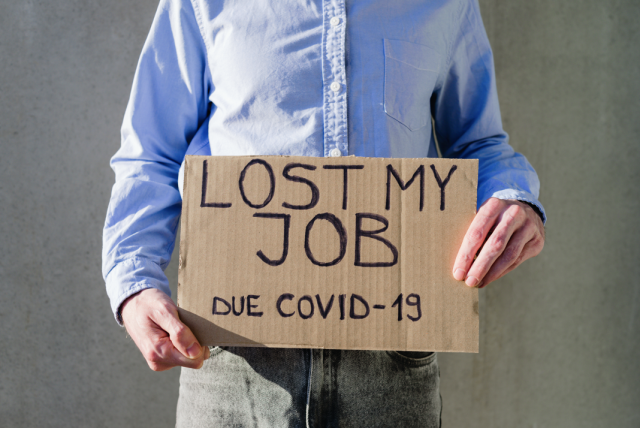Within just five months of the COVID-19 outbreak in the United States, American unemployment rates rose by nearly 14 million, from 6.2 million in February to more than 20.5 million in May 2020. From the historically low rate of unemployment seen in February 2020 of 3.8%, one of the lowest on record since WW2, unemployment rates climbed to 14.4% in April, a substantially greater increase than unemployment seen during the Great Recession.
Unemployment Rate for Women in 2020
Reports during the pandemic show that the unemployment rate for women at the height of the US’s unemployment was significantly higher than men. Industry leaders found that women’s unemployment rate during May 2020 peaked at 14.3%, while the unemployment rate for men peaked at only 11.9%. This is a direct contrast to the Great Recession that took place roughly a decade ago, which saw women’s unemployment rate peak at 9.4% in July 2010 while men’s peaked at 12.3% in January of that same year.
Experts speculate that women saw a much higher unemployment rate during the pandemic because women accounted for the majority of workers in the industry most impacted by the pandemic, such as leisure & hospitality and educational sectors. Employment fell by 54% between these two sectors from February 2020 to May 2020, much higher than most other industries. However, compared to the Great Recession, the markets most impacted by the housing crisis were the construction and manufacturing industries, where historically, women have had much lower employment.
Steeper Rates of Unemployment for Immigrants During Pandemic
One of the groups most impacted by COVID-19’s downturn of the US economy were immigrants. Although both US-born and immigrants had similarly low rates of unemployment in February 2020, by May, unemployment rates for immigrants had risen to nearly 16%, while the US-born workers’ unemployment rate rose to just 12.4%. Experts believe that immigrant workers were affected at a much greater rate than their US-born counterparts for several reasons. First, immigrant workers are predominantly made up of Hispanic immigrants, who comprise nearly half of the immigrant workforce in the US. Hispanic workers in the US today are relatively young, with the majority beneath the age of 35, and are less likely to have graduated from college. Additionally, surveys have found that 44% of Hispanic immigrants in the US labor force are unauthorized. These factors make immigrants, specifically Hispanic workers, much more vulnerable to economic downturns and unemployment.
Young Adults Received Greatest Impact
During 2020’s economic downturn, all but one age group saw unemployment climb to the double digits. Unlike their more experienced co-workers, employees between the ages of 16-24 experienced catastrophic unemployment rates at more than 25%, more than double the rate among workers over the age of 35. One of the most cited reasons for this high unemployment rate was the industries most common to the age group. Those between the ages of 16 to 24 most commonly work retail, food, and beverage, and restaurant industries making the group the first to be impacted by social distancing regulations at their place of work and subsequent government-mandated shutdowns. This same pattern can be seen in past recessions, with the Great Recession sparking an unemployment rate in young adults of 20% in June of 2010 when older workers’ unemployment peaked at only 10.9%.
 How Effective Was the Government’s Response to Widespread Unemployment?
How Effective Was the Government’s Response to Widespread Unemployment?
When the COVID-19 pandemic first started, many countries around the world were slow to act to the evolving situation and take measures to slow the rate of infection and prevent a severe economic downturn. Although American workers experienced a period of mass layoffs from March to June 2020, the American government were quick to act in the best interest of their citizens, and in March 2020, President Trump and Congress signed the CARES Act, which sent out checks to the majority of American citizens to protect those who had been laid off and could potentially not pay their rent/mortgage. The CARES Act also served to increase the amount of unemployment insurance each American received, which in fact made is so many Americans make more money than they would have earned working for their employers. The bill also paused evictions and created a universal child tax credit that significantly aided poor-income families with children who were much more financially impacted by the pandemic.
In December 2020, the American government once again passed a bill that offered bonus unemployment benefits and a nearly universal $600 stimulus check. A few months later, President Biden passed another stimulus bill that provided each American with a $1,400 stimulus check. As a result, the poverty rate in the US fell significantly in 2020, and many Americans found themselves more financially secure than they were before the pandemic.
Shawn Meaike, CEO of Family First Life, the well-known Insurance Marketing Organization, recognizes his company’s good fortune during the pandemic and credits Family First Life’s outstanding employees for the company’s success during the record-high unemployment. When unemployment was at an all-time high in the United States, Family First Life was able to contract record-breaking numbers and was in fact, able to bring on many new members to their team. Although Family First Life did not experience the same hardships many other companies faced during 2020, the Shawn Meaike and the Family First Life team does recognize the significant impact the COVID-19 pandemic had on the American economy.






